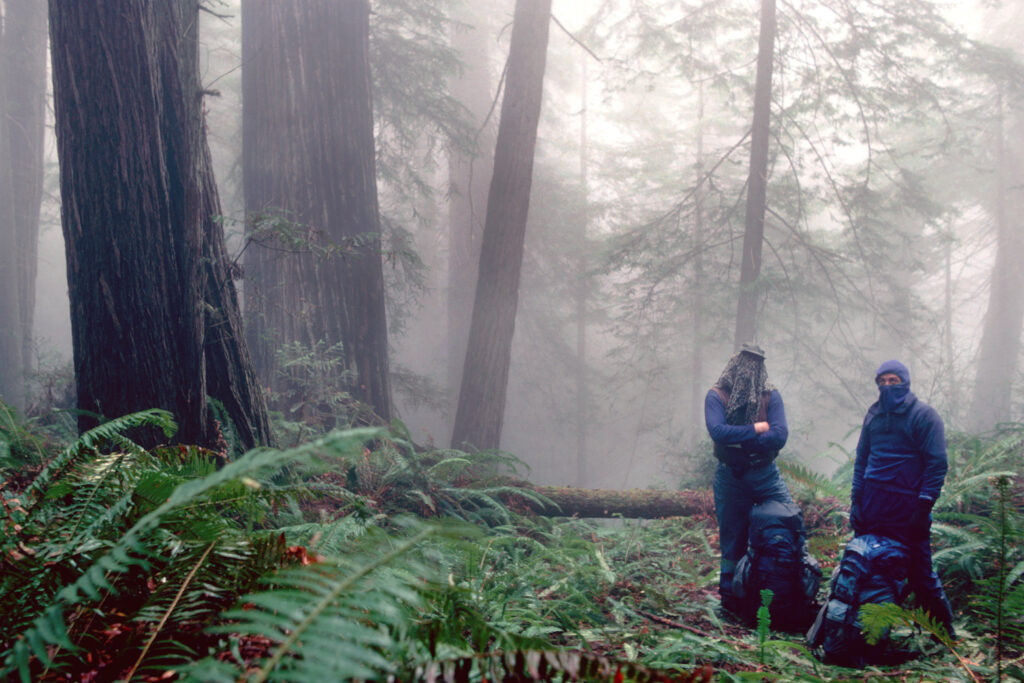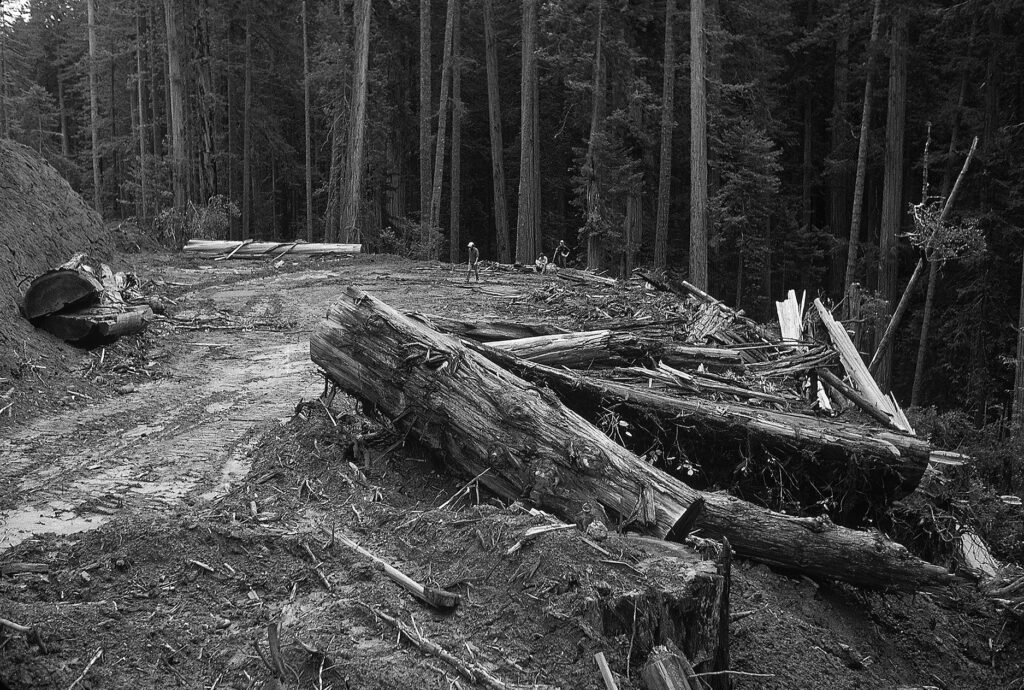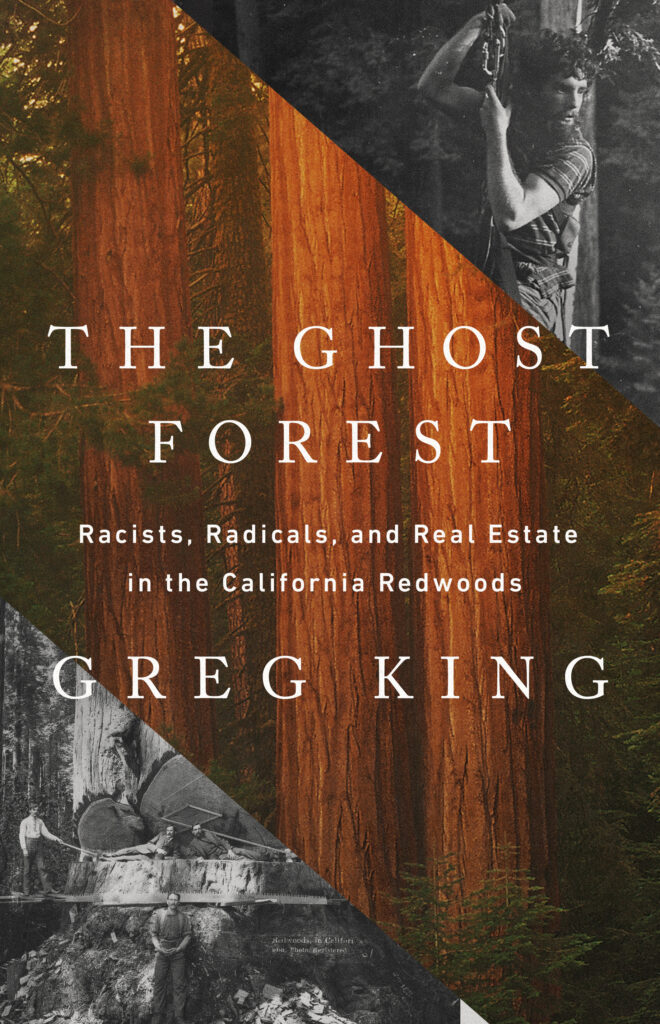Humboldt-based journalist and activist Greg King has spent his life connected to redwood forests.
Born and raised in Guerneville near Sonoma County’s few remaining redwood groves, King went on to write about redwood logging in the 1980s as a young reporter for The Paper, an alternative weekly which later became the North Bay Bohemian. Outraged by what he saw, King left his reporting job to become an activist, involved in a number of direct actions, including tree sits, aimed at preventing lumber companies from cutting some of the last remaining old growth redwoods.
King and fellow activists had some success with direct action, but, on numerous occasions, faced violent responses from lumber workers and their allies. His career in direct action ended with a nearly-successful attempt to hang a banner emblazoned with the phrase “SAVE THIS PLANET” and other admonitions from the top of the Golden Gate Bridge. A month later, in May 1990, two fellow redwood activists, Judi Bari and Darryl Cherney, were injured by a car bomb in Oakland.
The identity of the bomber has never been discovered, though activists suspect law enforcement may have been involved. (The Oakland Police and FBI tried to pin blame on Bari and Cherney, pursuing the theory that the pair were eco-terrorists knowingly carrying the bomb. Bari’s estate and Cherney won a record-setting $4.4 million legal settlement in 2002, after a jury agreed the agencies had violated the pair’s civil rights in their investigation.)
Last week, this reporter interviewed King about his new book, The Ghost Forest: Racists, Radicals, and Real Estate in the California Redwoods. Published in June, the 450-page book weaves together King’s early life and activism, with a detailed history of the timber barons who most profited from the rapid felling of magnificent redwood trees between the 1850s and the end of the 20th century.


Before the logging began, redwood forests covered two-million acres of the West Coast. Today, only 4% of that original forest stands. King also focuses on the role of the Save the Redwoods League. Founded in 1918, the nonprofit is still around 105 years later, with a fine do-gooder reputation largely intact.
In The Ghost Forest, however, King argues that the League, whose founders had numerous personal investments in redwood or industries which used redwood lumber, endeavored to slow a growing redwood protection movement. The League, then, was an early example of “greenwashing,” an industry front group used to downplay or obfuscate the negative environmental impacts of an industry’s actions. League activities covered in the book include proposing smaller conservation projects than would have been possible, actively lobbying against other groups’ more ambitious conservation proposals and paying timber companies well above market rate for their properties.
Asked for comment on the book, a spokesperson for the League provided a one-page, pre-written statement. It notes that environmental policy and “conservation ethics” were still in their infancy in the early 20th century when some, but not all, of the events covered in the book occurred and alleges that some of King’s claims are “purely speculative.” The statement does not identify any specific errors in the book, which King based on League documents stored at UC Berkeley’s Bancroft Library, other archival sources and interviews.
In an email responding to the statement, King wrote, “‘Purely speculative’ is an extraordinary claim because my examination of the League is clearly based on very specific documents that I note in the text… I would welcome an opportunity to publicly discuss the book and its conclusions with any individual, or set of individuals, of the League’s choosing.”


The following conversation has been edited for length and clarity.
Will Carruthers: One of the things that I didn’t appreciate before reading The Ghost Forest is what a crucial role redwood lumber played in the development of California as we know it today. Can you talk about what some of the things redwood lumber was used for?
Greg King: Commercial redwood logging didn’t begin until the 1850s early on in the Oakland Hills. At that time, it was used for really rudimentary purposes, including railroad ties and housing. Starting in the 1870s or so, the qualities of the redwoods—the lack of resin and the antimicrobial qualities—were starting to be discovered, and industrialists, through especially beginning in the 1880s and 1890s, began to understand that the redwood lumber could be used for industrial purposes, whose ease of use and cost and availability far outstripped any other material, including iron.
It was discovered in the early 20th century that redwood made the best wood for transporting water and sewage and holding cyanide solution [used in gold mining]. The only thing better was cast iron, which was cost prohibitive, and it was impossible to stitch cast iron pipes, in those days, across miles of rugged mountain terrain.
We think of redwood going into houses, but that wasn’t its superpower. The redwood use in stave pipes [specially cut lumber held together by metal bands] stands out for me as the most transformative application. That’s because the West grew according to availability of water, not only for cities, but for the massive agricultural expansion throughout the West.
You have the stave pipes being used for water delivery to municipalities and agriculture, which were two of the biggest growth industries at that time. But what became the most important use was in electric power. No other wood could be used to make these stave pipes—the biggest stave pipe was 16 feet in diameter—delivering enormous amounts of water to turbines. That production of power, the availability of that much power and the ability of redwood to provide it when nothing else could, really allowed Western industry to boom and cities to grow.
I can’t emphasize this enough: Virtually all industries that used electric power in the early 20th century, in the West, utilized power that was produced using redwood stave pipes. No other wood could do that.
WC: What other parts of the book seem to have resonated with readers the most?
GK: Without question, the Save the Redwoods League history is the most talked about element of the book. And, again, it’s shocking and surprising. And it shocked and surprised even me. And of course, for that reason, it was incredibly exciting to research. And then, as we were just talking about, you know, the stave pipes and the industrial uses of redwood. Virtually no one understood that. I didn’t, and I’ve been looking at this for decades. It really took some very deep digging.
The way that I got to that was through examination of the individuals who ran the League. And so I saw that the founding director was this guy with a Pulp Fiction name of Wiggington Creed. And I’m like, ‘Okay, well, who’s Wiggington Creed? Some, you know, beneficent rich guy who wants to help redwoods and takes over in 1920 as a director and writes the League’s bylaws and articles of incorporation. He’s probably a nice guy.’
And then I see that he’s like one of the biggest redwood barons in the world, and he married into the Hooper family and that C.A. Hooper, one of four baron brothers, developed the redwood stave pipes, and I’m like, ‘What the hell’s the stave pipe?’ And so I got into that, and everything continued to unfold.
There just isn’t any refutation of this. One of the greatest purveyors and consumers of redwood in the world, this man Wiggington Creed, wrote the league’s articles of incorporation and bylaws and ran the organization with others until he died in 1927.
King will appear at a book event hosted by the Stewards of the Coast and Redwoods and Russian River Books & Letters at 5pm on Wednesday, Sept. 27 at the Forest Theater in Guerneville’s Armstrong Woods.












